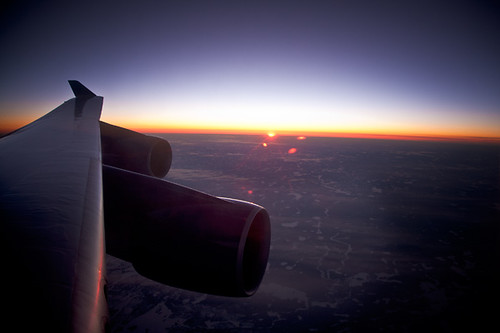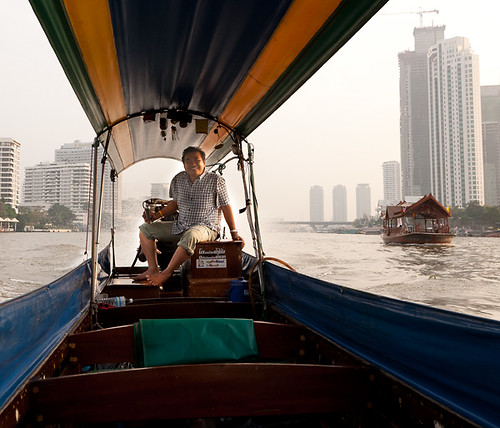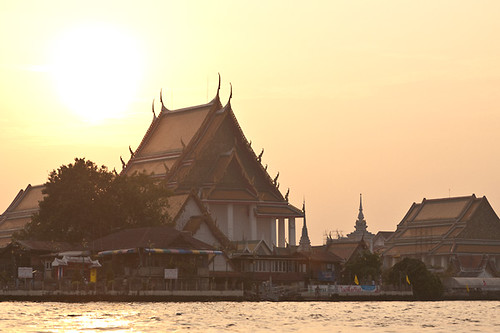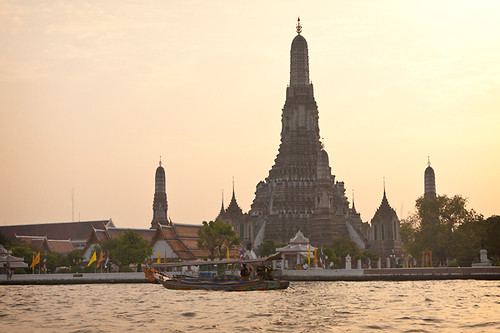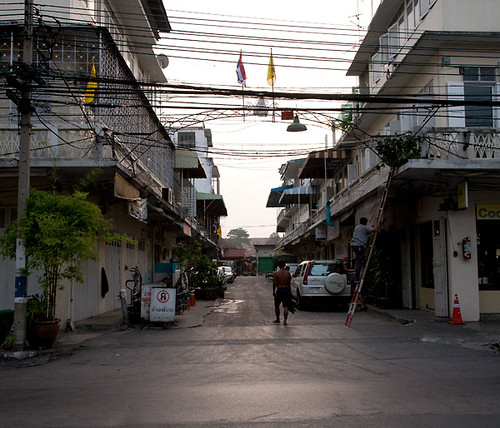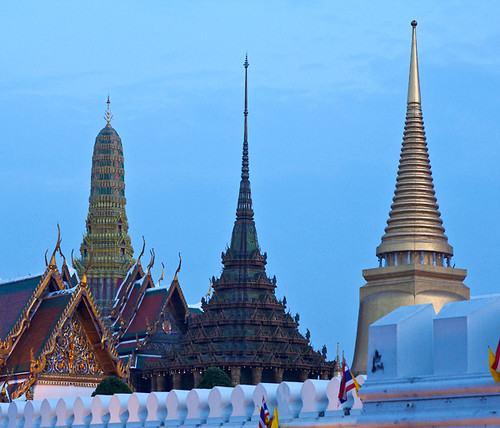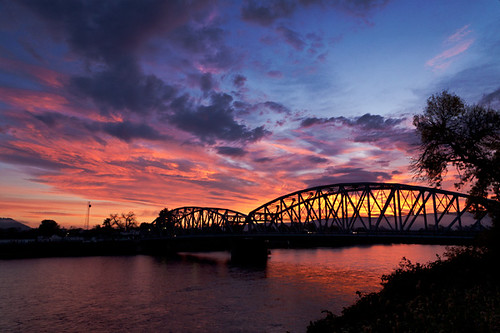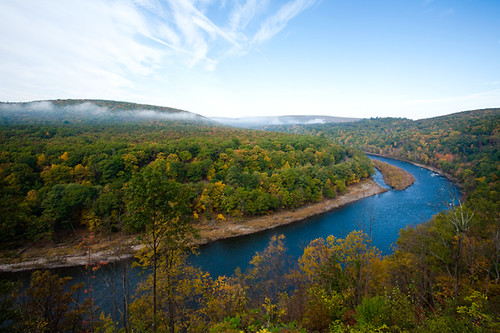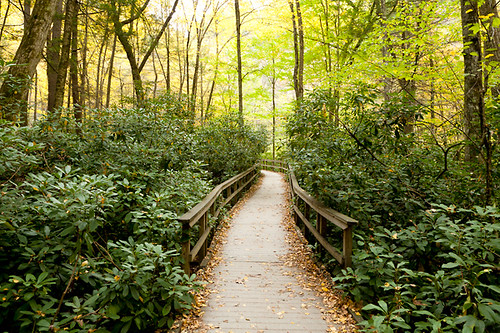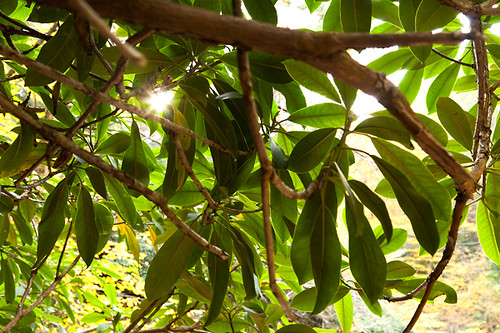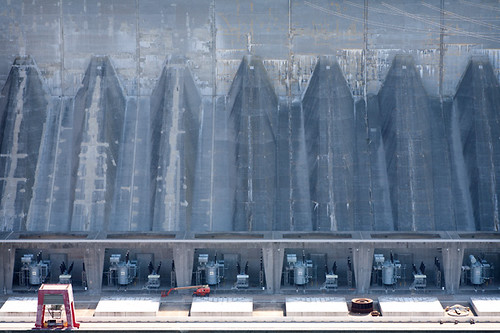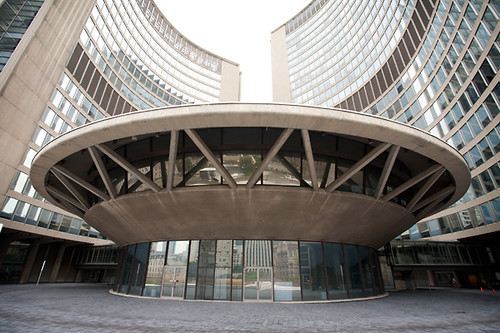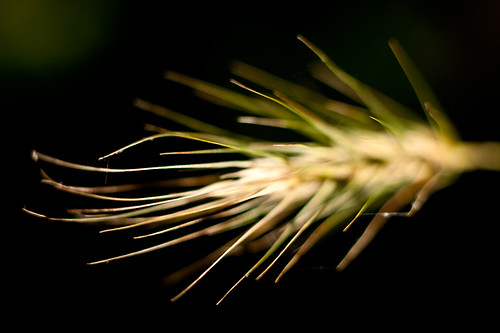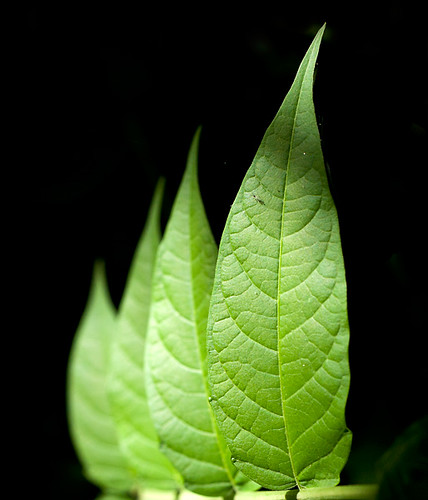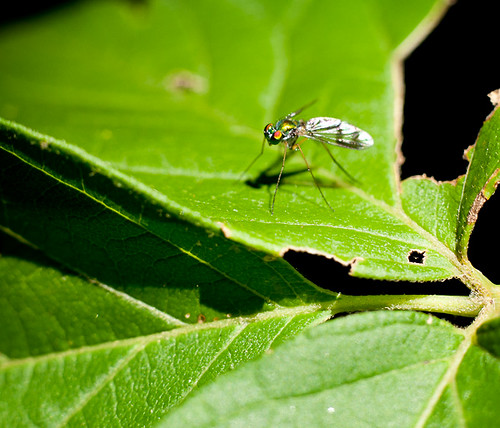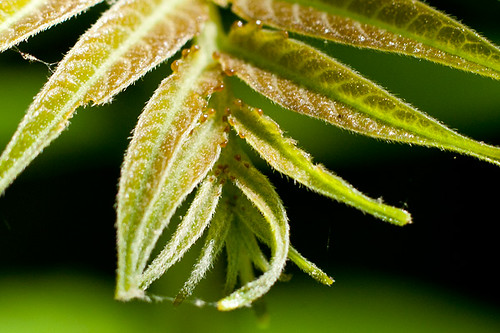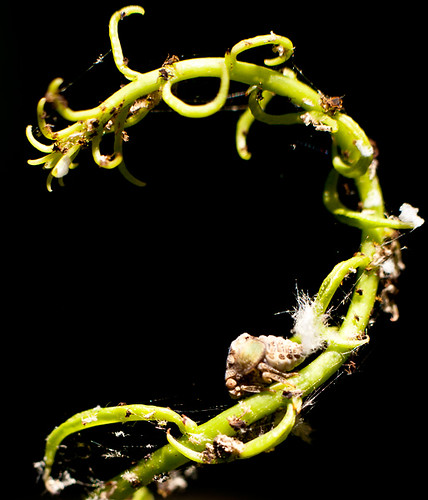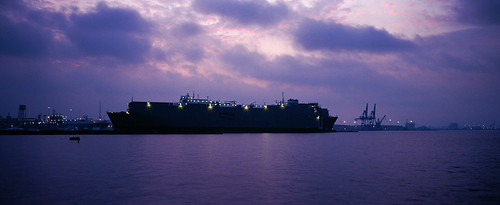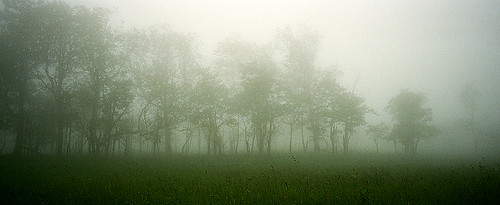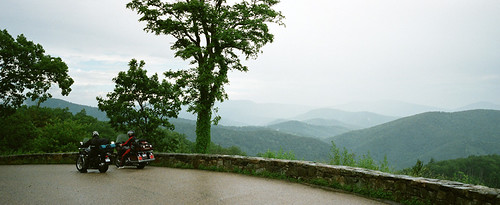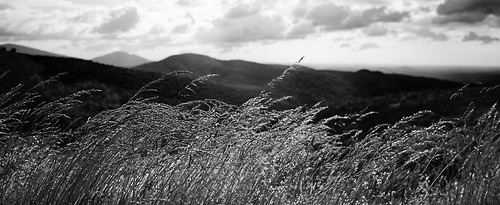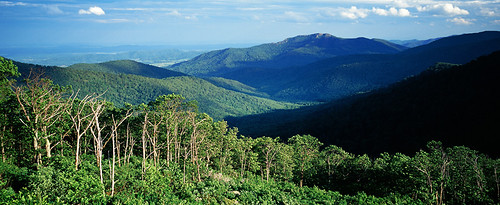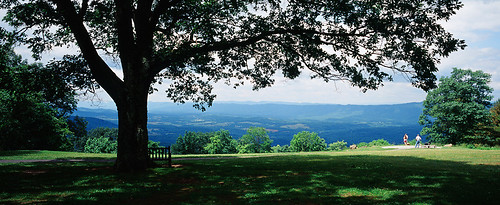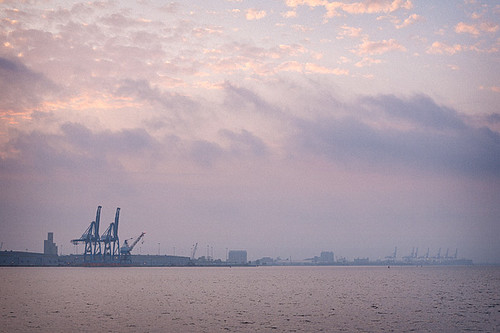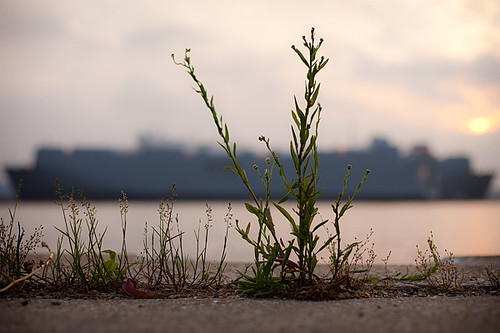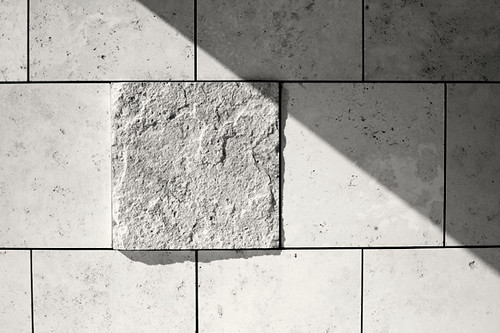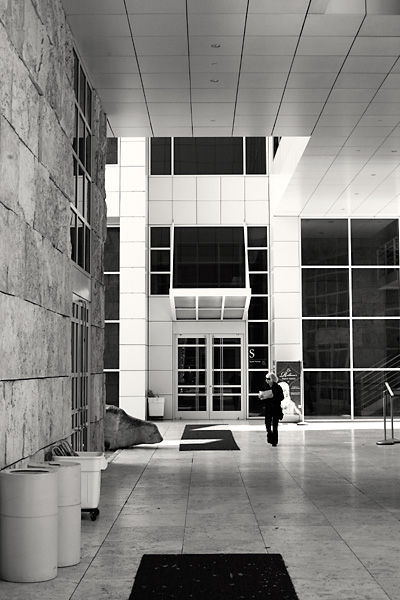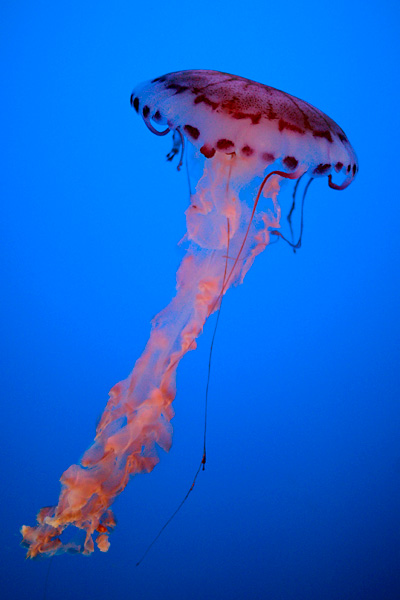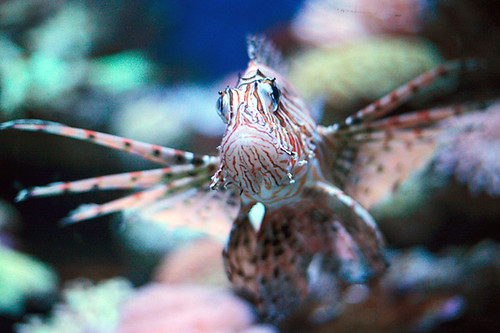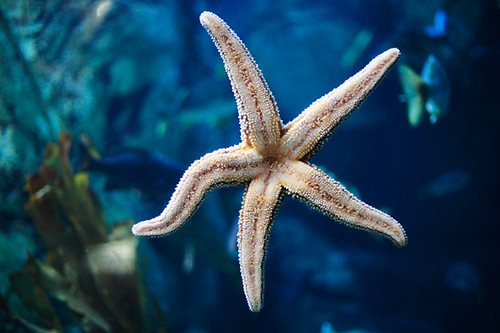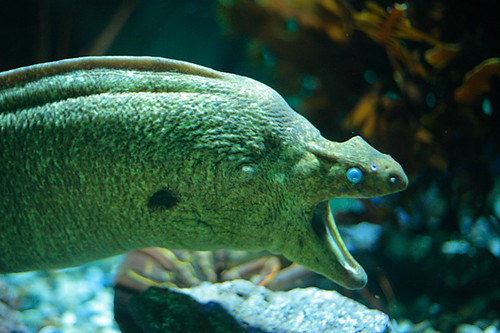Who knows how many times I've flown over
Shenandoah National Park. Dozens? Yet I'd never been there. I was always headed to "bigger and better" things out west (Yellowstone, Denali, Zion, etc.). That all changed last weekend.
With the Xpan stuffed in my backpack, we headed west. We shot around the DC beltway, out on I-66, then down US-29 to VA-211. As we reached Sperryville, our lunch options began to dwindle. Luckily, we found
High on the Hog BBQ for some good local "grub". Topped off, we wound our way up 211 and headed further back in time.
We entered the park at Thornton Gap. The friendly ranger gave us a map, told us it was a free weekend, and waived us on through. Excellent. With the Skyline Drive in our sights, we headed south.
After some stops at various overlooks, our first main destination was Limberlost trail near mile marker 43. It's probably one of the easiest trails you'll find in the whole park. It's paved with gravel and rated as ADA accessible. This isn't some
blah trail though. There's plenty to see and photograph if you pay attention to the details and patterns. Also, if you wear some boots and long pants you'll have a little more freedom to get off the trail to explore different angles.
When we were done with our hike, we continued to head south to the Byrd Visitor Center at Big Meadows. The Meadow is indeed Big, especially by east coast standards. Unfortunately, heavy rain and fog rolled in just as we got out of our car. After sitting tight for a little while, we decided to start working our way north again, toward Luray.
We checked in at the
Days Inn. The accommodations were completely adequate for our needs (bed, thermostat, shower,...
ahem... free wifi). Also, if you find clashing decor entertaining, then this is definitely the place for you. After we got settled, we headed into town to find some food.
Artisans Grill was actually one of the surprise highlights of the trip. We settled on it after driving up and down Main St. a few times. The food and service were excellent, and the prices were reasonable. It will almost certainly be our go-to spot the next time we find ourselves in Luray.
After dinner, we made a cold, windy, and brief attempt to watch the sunset from one of the overlooks. With the Sun setting so late in the evening though, we decided to call it a day and head back to the hotel.
The next morning, we reentered the park at Thornton Gap and headed north on the Skyline Drive. It was a Monday, so unfortunately the free weekend was over. I gladly paid the $15 though; it was certainly going to a good cause.
The Fox Hollow Trail was our next major destination. This was also a worthwhile hike. Though not as easy as Limberlost due to its inclines. It's still one of the easiest trails in the whole park though. We were amazed how different this trail was from Limberlost too. The huge poplar trees seemed to loom over the entire forest. Be sure to pick up a $1 guide book at the trail head. There's a lot of history along this trail, so you're going to want to follow along.
With another great hike behind us, we made a brief stop across the street at the Dickey Ridge Visitor Center. As we headed north out of the park and into Front Royal, we could satisfyingly say we'd been to Shenandoah National Park.
--
The main book we used on this trip was
Best Easy Day Hikes, Shenandoah National Park. While not photographically oriented, this book does give some great tips on where to go. When you're reading it though, keep in mind that when they say "day hikes", they mean "day hikes." In other words, make sure to look at the distance, difficulty, time, and your supplies before picking a hike. On the plus side, many of the hikes are out-and-back, so you can turn around when you've had enough. Also, for the photographer, finding "easy" trails is important when schlepping camera gear. Pick and choose what you take.
Another useful book when visiting any national park is the
National Audubon Society Guide to Photographing America's National Parks, which you may have seen me
mention before.
Alas, there are no pictures to share from this trip yet. That is the price of stepping back in time and shooting film. More to come...
